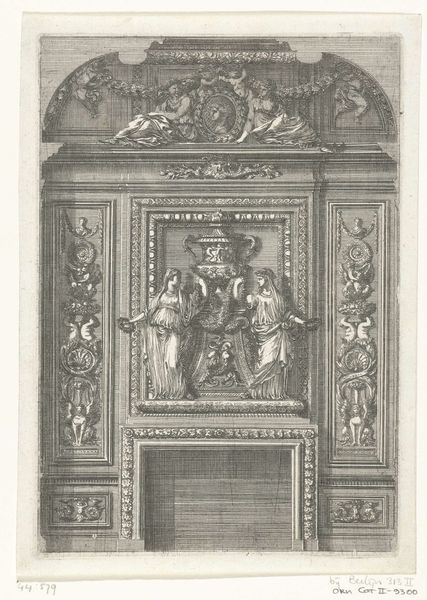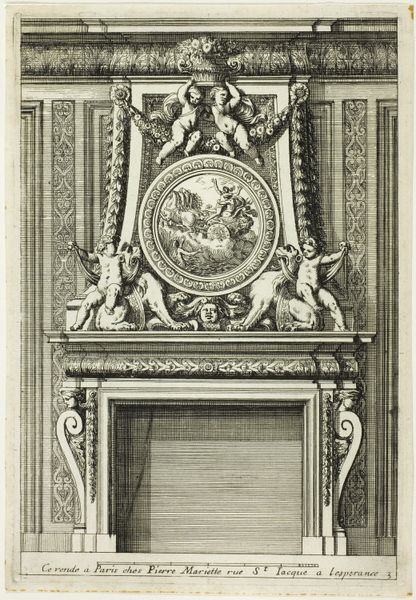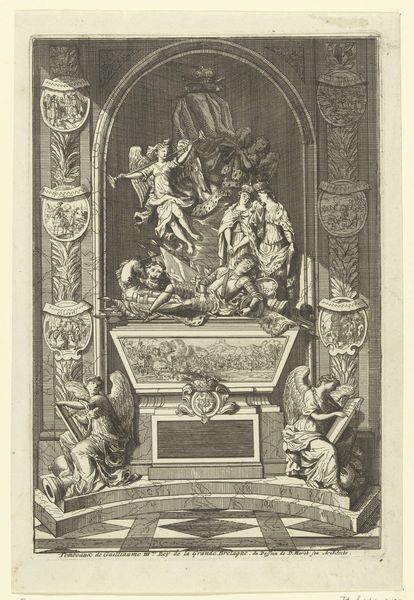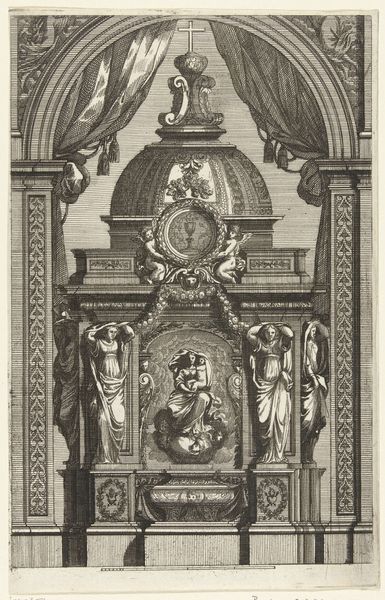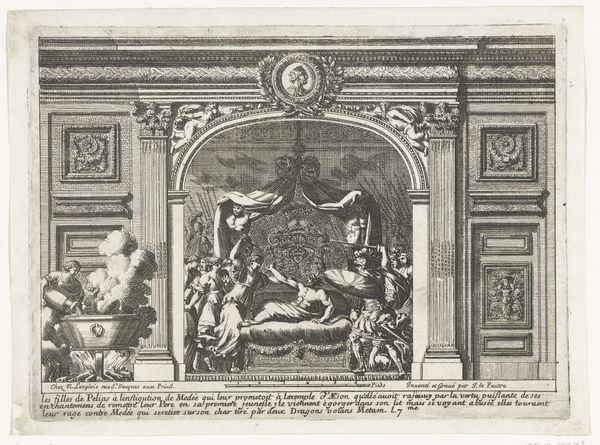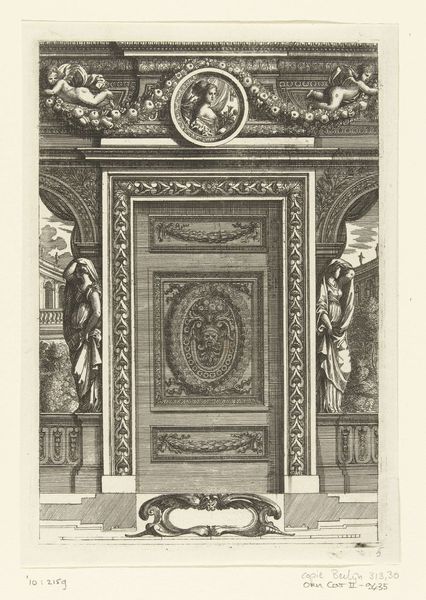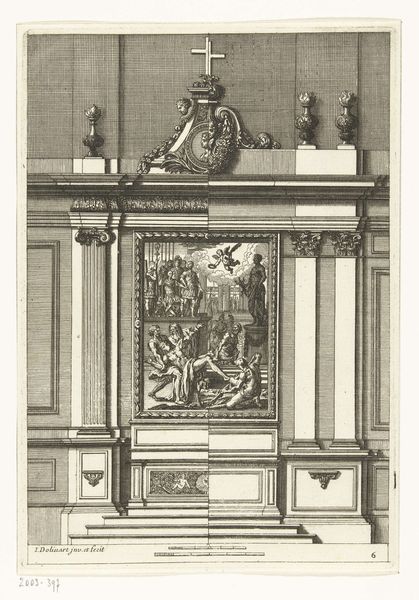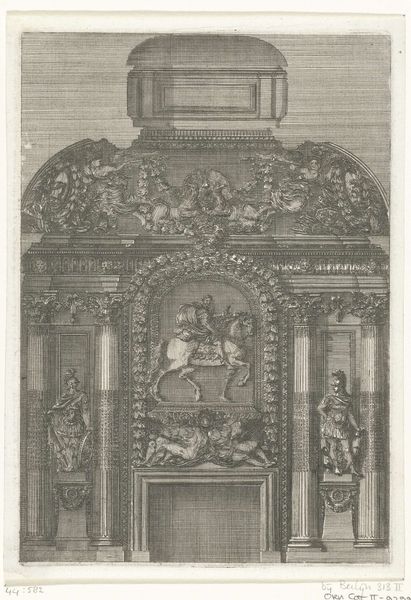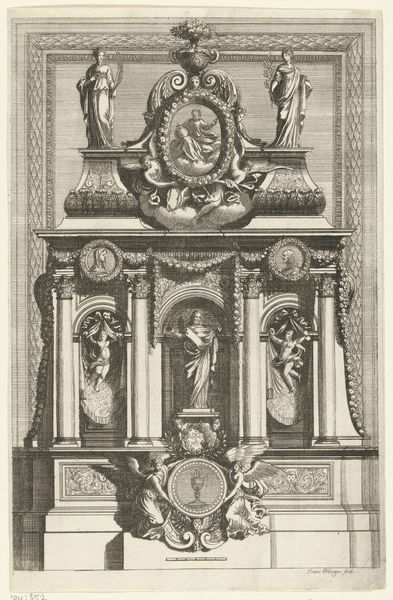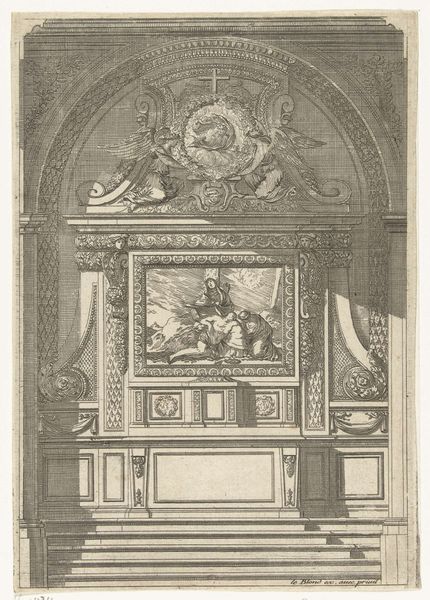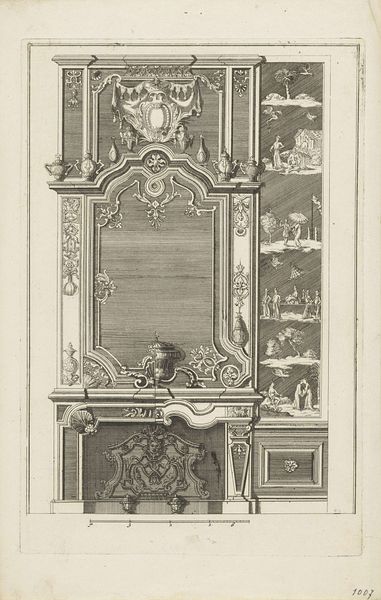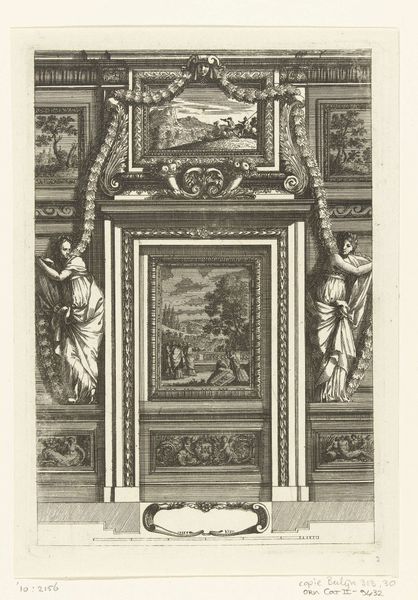
engraving
#
portrait
#
baroque
#
old engraving style
#
figuration
#
line
#
history-painting
#
engraving
Dimensions: height 222 mm, width 146 mm
Copyright: Rijks Museum: Open Domain
Curator: This print, created between 1698 and 1706, is called "Onderboezem met beeld van Louis XIV," which translates to "Mantelpiece with statue of Louis XIV". The piece is currently held at the Rijksmuseum. It's an engraving showing ornate, classical details intended to frame a fireplace. Editor: It strikes me as quite formal and allegorical, almost aggressively so. The linear precision gives it a strong sense of order. It feels designed to impress with its complexity, doesn’t it? Curator: Absolutely. The print exemplifies the Baroque style, which was very much about projecting power and grandeur. We see the figure of Louis XIV being presented as a Roman emperor. The effect serves to underscore the King’s authority and legitimize his reign through historical precedent. Editor: The artist really packed in the details. Angels, laurel wreaths, mythical figures struggling with beasts… The composition teeters between overwhelming and fascinating, the lines adding a textural depth that belies its two-dimensionality. There’s definitely a hierarchy in play here. Curator: Precisely. Note how the imagery reflects the concerns of Louis XIV's France, which sought to construct an image of absolute power—hence the theatrical, densely layered visuals designed to impress visitors to a French estate or palace. The print's circulation extended that imperial branding exercise. Editor: So, it was a way of communicating status and projecting a specific image through decor? How interesting to consider prints like this as essentially early forms of propaganda in an interior design context! The level of precision for that end is astonishing. Curator: Exactly. Consider how a print like this contributes to the cultural narrative. Beyond aesthetics, it's reinforcing very specific political and social structures. Art rarely exists in a vacuum; it functions as part of a much broader system. Editor: Thanks for unpacking that context, really alters how I see the arrangement. What looked like merely elaborate embellishments now appears to communicate an urgent need to display absolute power through very detailed design and production. Curator: Indeed, these details make it more than just decoration, and considering this role enriches our understanding and appreciation. Editor: I completely agree, I had only thought about it visually before and am walking away with a much stronger grasp of this piece and the social function it played.
Comments
No comments
Be the first to comment and join the conversation on the ultimate creative platform.
